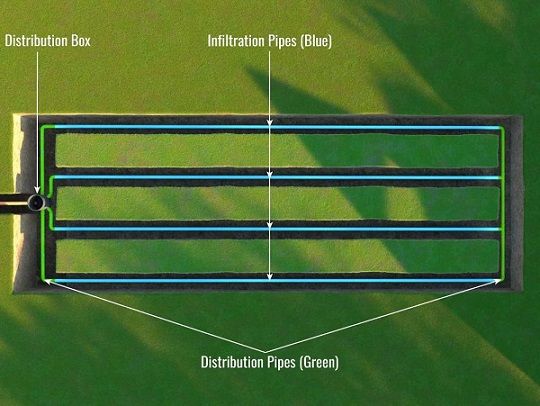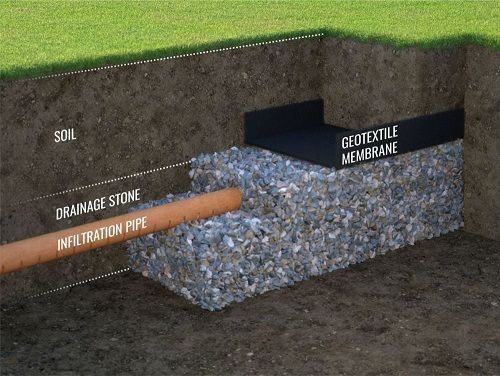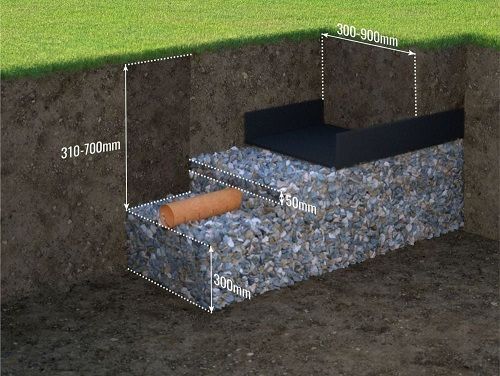General Binding Rules for Sewage Discharges
The 'General binding rules' which affect septic tanks the most are in the legislation: 'small sewage discharge to a surface water'.
The Building Regulations only brought out the Drainage Section (H2) in 2020 and there were few rules about what you could do with the 'discharge' from the septic tank. Existing system discharges were virtually ignored. However, once Section H2 was published, in collaboration with the Environment Agency, the new Building Regulations started to apply.
In 2015, things became even more difficult for septic tank owners, as the first General Binding Rules were brought out and septic tank discharges could only be made to an Infiltration Drainage Field. Discharge to a watercourse - ditch, stream or river, was banned.

General Binding Rules for Existing Septic Tanks
The rules were tightened even further in 2020. They state:
`If your septic tank discharges directly to a watercourse, you need to do one of the following as soon as possible:
- connect to a mains sewer
- install a drainage field (also known as an infiltration system) so the septic tank can discharge to ground instead
- replace your septic tank with a small sewage treatment plant
You must have plans in place to carry out this work within a reasonable timescale, typically 12 months'.
You can see the full document here.
The discharge to ground must be via an infiltration drainfield, as shown. Soakaways (holes in the ground filled with rubble or crates) are not allowed.

What is an Infiltration Drainage Field?
An Infiltration Drainage Field is a series of pipes, underground, bedded on and covered with stone, that allow the effluent to slowly seep into the soil, where the pollutants are digested by the natural beneficial aerobic bacteria. These bacteria ensure that the water is purified before it hits the water table and people drink it through their taps.
There are strict rules about the design and construction of these fields, including depths, type of pipe, type and size of stone, etc. and we have never seen one, installed by someone else, that is constructed absolutely to the rules. Drainage Crates, for example, are totaly banned, but we have seen many installed for septic tank effluent by other installers.
There are also a series of tests on the soil that have to be done berfore a design can be drawn up at all and many contractors fail to do them. The drainage field then fails very quickly. Many sites fail the tests and can't have one at all.
Drainage field size - if you pass the tests - varies with the type of soil you have, but they always cover a very large area and most people don't have room for one in their garden.

Rules if you are Buying a House with a Septic Tank
You must be very careful if you are buying a house which has existing septic tank drainage.
The General Binding Rules state:
'You should agree with the buyer or seller who will be responsible for replacing or upgrading the treatment system. You should agree this as a condition of sale.'
Some systems simply cannot be upgraded at all, as they either fail the mandatory soil tests, don't have enough land for a drainfield and don't have a watercourse that they could discharge into from a sewage treatment plant. In any case, you are looking at a cost of between £7000 and £20,000.
This is why a septic tank survey is essential BEFORE you make an offer or exhange contracts

